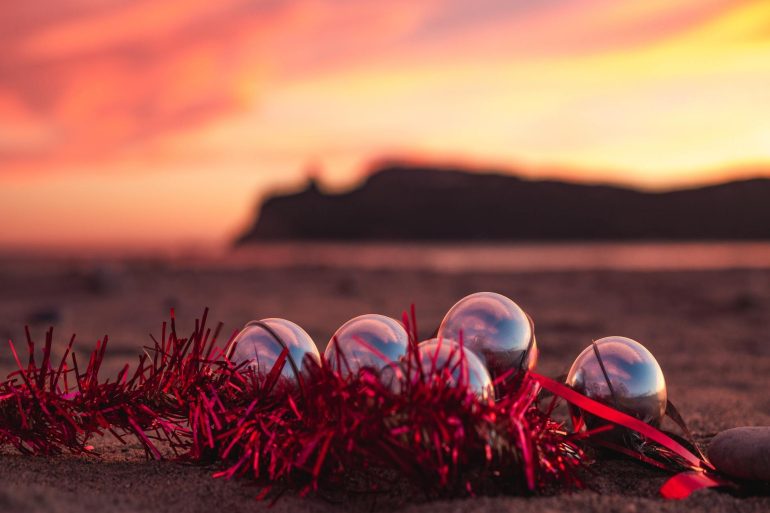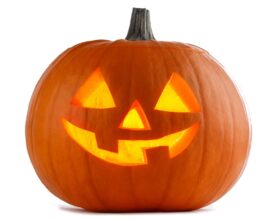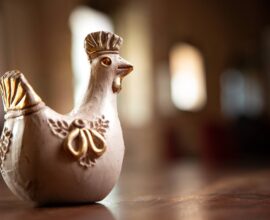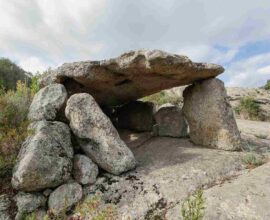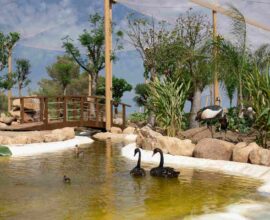Christmas in Sardinia amongst myths, history and traditions
Christmas in Sardinia: the flavours of the holidays and family togetherness
In Sardinia, Christmas has always been the “holiday” par excellence, it’s the perfect time to rediscover the family’s warm embrace and fully experience the local traditions.
Christmas in Sardinia is “La Festa” (The Holiday), “Sa Paschixedda”. Today, as in the past, it is the time to reunite with family and affections in the name of ancient traditions, legends and rituals of a tribal and mystical era that has inherited the fascinating “magical religious” past of the Winter Solstice festivals.
The general themes of the festivities on the island are conviviality and togetherness as in the agro-pastoral society of the past, work imposed long periods of absence and men returned from transhumance in the days before Christmas.
Tradition dictated the family gathered around the warmth of the fireplace on the night of Christmas Eve (called Sa nott’è e xena or the “warm night”). The elders would narrate stories and legends to entertain the little ones and a frugal meal would be consumed to celebrate the joy of those precious moments.
The hearth, the fulcrum of the house, would take on an even more important meaning and it was customary in many houses to repaint the blackened walls of the fireplace so that it was refreshed in time for the 24th. On that evening, a large log of wood, especially chosen for the occasion, “su truncu e’xena”, was lit. This had to remain burning throughout the holiday period, until the day of Epiphany on January 6th. It was very important that it never died out but also that it did not burn completely, a ritual that would give health and economic prosperity to the family.
On December 25th, the table was laden with a hearty meal. Even the less well-off would be able to fully enjoy the Festivities as the community did its best to put together the “mandada”, a supply of the best of Sardinian gastronomy that would include sweets, meats, cheeses, dried sausages and offal.
A prominent role was played by traditional sweets such as the “pabassinas“, diamond-shaped glazed biscuits with a dough made of flour, raisins, walnuts, hazelnuts, sapa and almonds, the “sa tunda“, sweet round bread with raisins and walnuts, and the “su bacchiddu ‘e Deu“, bread decorated to resemble the bishop’s crosier.
Christmas myths and traditions in Sardinia
Family, domestic warmth and children. Christmas would be the children’s festival who could finally stay up late and listen to stories and legends. Some of these were “thrilling” tales of witches and fantastic creatures like in the case of the legend of Maria Puntaoru who, during the night would go to feel the belly of the little ones and, if she found it empty, she would skewer it with a golden spit. Or the story of Maria Mangrofa witch of Orosei who devoured children.
The tales around the fire served as a warning to children but also would have the function of rebuking adults, often blinded by greed and hatred.
Of great importance were also games that would provide a perfect opportunity to spend hours of fun and leisure with the family and enjoy the warmth of the holidays. In addition to cards games and the tombola (a game similar to bingo), a common pastime was “su barrallicu“, a four-sided spinning top on which were engraved the letter “T” (all), the “N” (nothing), the “M” (half) and the “P” (pose, i.e. put).
Each player would turn the spinning top that would give a command according to the resulting letter. The T allowed to take the loot of dried fruit, nuts and chestnuts, while the P would require putting a part of it on the plate.
When the tolling of the bells announced midnight, families would go to “Sa Miss’è Puddu“, the “mass of the first crowing of the rooster”, a deeply felt anniversary to address prayers to the Lord and reunite with distant relatives and friends.
It was considered essential for pregnant women to attend as otherwise they would run the risk of losing the baby or giving birth to an unhealthy child.
Finally, being born on Christmas Eve was considered a real privilege. These lucky people were believed to be very long-lived, immune to diseases, and would have lost neither teeth nor hair throughout their lives.
Would you like to experience all the magic of Christmas in Sardinia and enjoy a fabulous holiday in an authentic paradise? Discover Forte Village Resort in Sardinia
